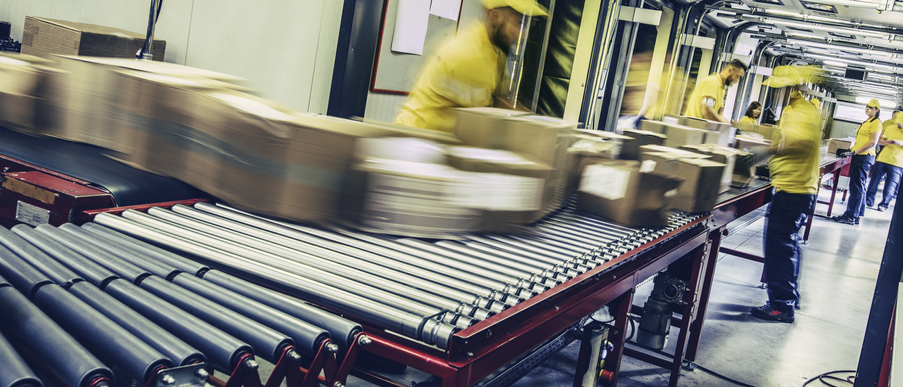4 Times When a Quick-Turn PCB Board House Isn't Enough
There’s a certain need for speed in manufacturing circuit boards -- the electronics industry demands it, and your end users demand it. But how quick...

Printed circuit boards (PCBs) are the foundation of almost every electronic product. When one fails, the results can include product recalls, costly downtime, warranty claims, and unhappy customers. While any company would find this frustrating, OEMs and B2B electronics manufacturers face even greater risks, including lost contracts, delayed shipments, and damage to their reputation.
The inherent complexity of modern PCBs — with their ever-increasing density, miniaturization, and higher operating frequencies — makes them more susceptible to subtle defects that can be challenging to detect. This complexity underscores the need for robust quality control throughout the entire manufacturing chain.
Most PCB failures don’t happen at random. They often result from a handful of avoidable problems. Whether you’re sourcing fully assembled boards or integrating them into your final product, understanding these common failure points can help prevent problems before they reach your customer.
Most circuit board failures fall into a few repeatable categories. These include:
Preventing a PCB malfunction starts with solid design and ends with disciplined quality control. The sections below explore each of these causes in more detail and share practical tips for OEMs looking to reduce PCB failures.
One of the biggest contributors to PCB failure is a mistake during the manufacturing process. These issues aren’t always obvious right away. They can show up weeks or months later during use.
Common PCB defects include:
For B2B buyers, selecting a PCB supplier with strong process controls and IPC-certified inspectors is critical. Don’t skip over questions about their quality systems during vendor qualification.
PCBs are extremely sensitive to electrostatic discharge (ESD), and though we can only feel ESD in the thousands of volts, the smallest discharge can cause a component defect. This can be latent (meaning the PCB remains functional but suffers from downgraded reliability) or catastrophic (meaning permanent damage has been done).
Mitigation Tip for OEMs: Choose a contract manufacturer that uses ESD-safe protocols, anti-static tools, and controlled environments as standard and ensures stringent cleanliness protocols throughout the entire manufacturing and assembly process. This attention to detail prevents costly recalls and downstream integration issues.
Burnt components are technically a type of PCB defect, but it’s worth noting as a major cause of PCB failure. A burnt component can compromise the entire PCB and demand a full board replacement.
The three main causes of burnt components include:
A PCB’s long-term reliability depends on the conditions it faces during operation. Heat, humidity, dust, and vibration all contribute to long-term degradation or early failure.
OEMs designing electronics for rugged environments must account for:
Pro tip: Ensure your boards undergo accelerated life testing and conformal coating if reliability in harsh environments is a requirement.
Solder is a key ingredient in the PCB process. It’s what maintains the contact between a component and a circuit. Improper soldering can introduce a wide range of failure modes, including:
These problems often occur in high-mix, low-volume production or when reflow settings are not properly controlled.
Well-trained assemblers, robust quality checks, and automated optical inspection (AOI) help catch these issues before they reach final testing or the end user.
Human error still plays a role in circuit board failure, especially in custom builds or first-article assemblies. Examples include:
For OEMs relying on a partner for PCB assembly or repair, process discipline is non-negotiable. Be sure your partner adheres to IPC-A-610 Class 2 or 3 standards, depending on your industry.
PCBs have a finite service life, just like any other mechanical or electronic system. Over time, materials degrade, components fail, and signals can become unreliable.
When supporting legacy products or field returns, working with a contract manufacturer that offers PCB failure analysis and aftermarket services (such as board-level repair and rework) can extend product lifecycles and protect your bottom line.
Struggling with Legacy Part Availability or Lifecycle Risk?Download our free resource, The Ultimate Guide to Obsolescence Management, and learn how to futureproof your product lifecycle and sourcing strategy. This guide covers risk identification, planning strategies, and tips for extending the life of your electronics systems. |
The most productive OEMs respond to a faulty PCB and also design to prevent it. That means looking beyond one faulty PCB and investing in:
These steps reduce future downtime, warranty costs, and customer dissatisfaction, especially in safety-critical or mission-critical devices.
Prevent PCB Failure EarlyGet practical insights from The Ultimate Guide to PCB Testing & Prototyping Methods — created for B2B teams and OEMs. Learn how to catch issues early, validate your design, and choose the right manufacturing partner. This resource explores how to catch issues early, validate your design, and choose the right manufacturing partner with confidence. |
PCB failures are rarely random. Most result from issues that can be identified and addressed early in the design, manufacturing, or testing process. Common contributors include manufacturing defects, environmental stress, soldering problems, and aging components.
OEMs that take a closer look at supplier capabilities, testing procedures, and long-term reliability can reduce field failures and production delays. Careful planning and quality control lead to more dependable performance and fewer unexpected issues after deployment.
Want more insights on preventing PCB failures and improving reliability? Visit the Matric blog for expert tips, technical resources, and real-world guidance tailored to OEMs and electronics manufacturers.
(Editor's Note: This post was originally published in 2018 and was updated in June 2025.)

There’s a certain need for speed in manufacturing circuit boards -- the electronics industry demands it, and your end users demand it. But how quick...

There are many areas in life where accepting mistakes as inevitable is a good thing -- electronics manufacturing is not one of them. The end goal...

“How will my idea go from conception to finished product at your company?” It’s a question we hear a lot, and a good one. It’s natural to want to...